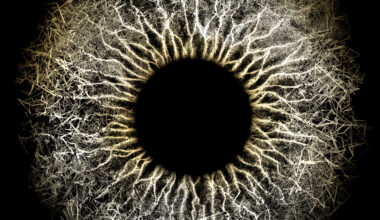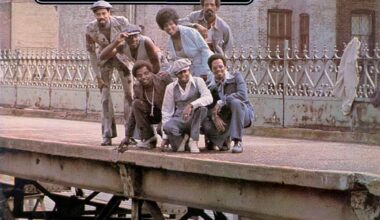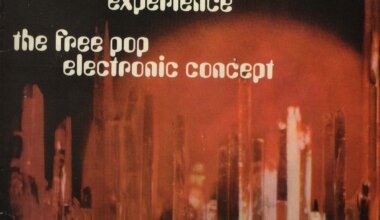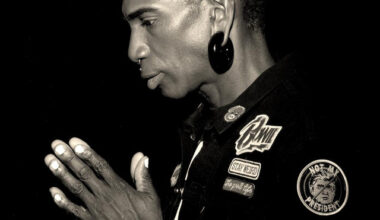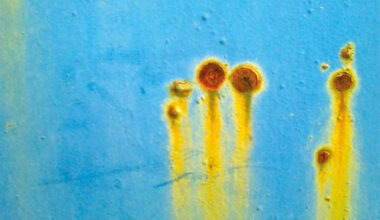Our esteemed columnist has been unusually quiet of late. And then, like magic, up he pops up with news of his exploits… it’s quite a tale, as you’d expect

First, I must apologise for missing a few recent columns. After my beloved partner Helen Donlon passed away in June I went into a bit of a tail-spin that nearly killed me. Now I’m back and all yours.
Maybe weirdly, I found solace in tapes of the groundbreaking radio shows that soundtracked my early 1980s visits to New York and my time living in the city for the last half of the decade. Once rare as hen’s testicles, these marvels of the pre-modern age can be found all over YouTube.
I first became aware of the trailblazing action going on in these mastermixes when I clicked with Youth while visiting his Notting Hill squat to do an interview with Killing Joke. We shared a mutual love of Chic and electronic disco. When I visited him again at the Ladbroke Grove basement flat we would end up sharing together, Youth stuck on a cassette of a ‘Mastermix Dance Party’ from New York radio station WRKS, better known as KISS FM, which thundered through his Marshall bass-stack at ear-shredding, brain-frying volume.
Drum machines were left clattering and pulsing in mid-air before the behemoth bassline kicked in and the chorus passed through like a ghost in the machine. I particularly remember Hamilton Bohannon’s ‘Let’s Start II Dance Again’ wreaking havoc of a kind I’d only experienced on the American 12-inch remixes that could then be found in emporiums like Groove Records in Soho.
Influenced by legendary DJ Larry Levan’s audacious, rough-house mixing assaults at the Paradise Garage club, and his remixes, there were many more radio-derived DJ mixes to be heard on cassettes that became like gold dust in London’s underground dance circles and had a profound effect on DJing and record production. KISS FM led the pack, the sultry tones of Yvonne Mobley introducing mastermixes from influential DJ and producer Shep Pettibone, or tear-ups from tape edit kings Latin Rascals, but WBLS had Tony Humphries and WKTU presented an hour of total mixed-up mayhem at noon every day, hosted by a nutter called Paco. This was music pushed to the limits, dismembered and reconstructed for maximum demolition.
Youth and I, often joined by an equally awed Alex Paterson would loll, smoke and revel in this new electronic musical language, our jaws hitting the floor at regular intervals. When Youth formed the band Brilliant after departing from Killing Joke, he sought to recreate the KISS monster-funk sound, using two basses, including his sometimes precarious synth-bass.
Mick Jones of The Clash had already been smitten during the band’s 1979 US tour, relentlessly glued to his beat-box and loving the accolade that their 12-inch single ‘The Magnificent Dance’ was being played on KISS, with Bugs Bunny and ‘Dirty Harry’ Clint Eastwood bites lashed to the groove (yep, these guys were pioneering sampling too). When The Clash returned from their US tour with The Who in December 1982, Mick said “happy Christmas” and pressed a cassette he’d decorated himself into my hand. He had obviously captured the sounds on it with great care and attention, as The Peech Boys’ ‘Don’t Make Me Wait’ segued into a mating of Marvin Gaye’s ‘Sexual Healing’ with Eleanor Grant’s answer record and Grandmaster Flash & The Furious Five’s ‘It’s Nasty’. New York radio would also have a profound effect on Mick Jones’ group Big Audio Dynamite, notably in the way band member Don Letts planted his samples.
Coldcut were in there early, taking the mastermix concept on to their newly-minted Ninja Tune label after the feet-finding ‘Beats + Pieces’ EP in 1987. And obviously there was Bomb The Bass, aka sampling wizard Tim Simenon.
This British take on the mastermix ethos derived more from the hip hop that went out on weekends in New York, via KISS and WBLS, featuring epic jams from DJ Red Alert (whose catchphrase was “Red Alert goes berserk”) and another DJ, Chuck Chillout. The mastermix could work with anything from New Order’s ‘Blue Monday’ (an acknowledged classic of the genre) to Michael Jackson’s ‘Thriller’. The breathy female intoning “98.7 KISS… mastermix” at strategic moments heightened the impact and drama afoot.
When I first went to New York I spent more time huddled over my newly-acquired ghetto blaster than seeing the sights. I returned from the US every time with a carrying case full of freshly-minted cassettes, many which still reside in my graffiti-splattered old briefcase. I even went up to the KISS studio, blagging my precious membership card and a sweets jar emblazoned with the station’s lips logo. It was 1983 and the big tunes were Afrika Bambaataa and Arthur Baker’s ‘Planet Rock’, Shannon’s ‘Let The Music Play’, Hashim’s ‘Al-Naafiysh (The Soul)’ (thrusting electro into the mix) and ‘Thriller’, plus a host of hot hip hop. Also popular were Run DMC (whose ‘Jam Master Jay’ turned the drum machine into an instrument in its own right), BDP, and the Fearless Four’s ‘Problems Of The World’ marking the advent of the drum machine as a stark backdrop for the rappers rather than the funky live band sound previously deployed. These mastermixes inspired Alex Paterson’s DJing and his whole attitude to sonic manipulation when he started The Orb almost 30 years ago, and released ‘The Kiss EP’.
KISS carried on, becoming more mainstream and finally merging with former arch-rival radio station WBLS in 2012. It’s a very different world and a much-altered New York City; hip hop is now America’s most popular musical form. But between the late 1970s and through the ensuing decade, these stations led the quest for finding new ways of causing electronic mayhem.
This has been an unashamedly indulgent wallow in one of my own favourite times for music. It’s nice to be back.

